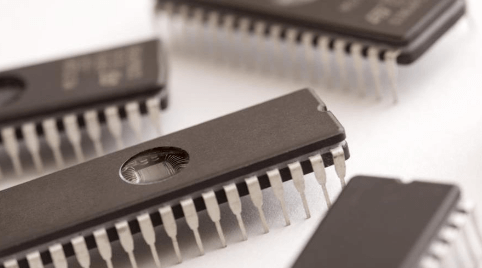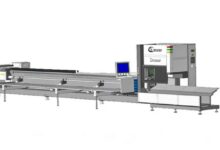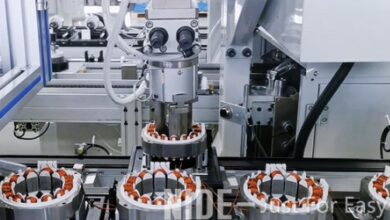What Are the Key Components of an Integrated Circuit and How Do They Function Together?

Integrated circuits, or ICs, are the backbone of modern electronics, powering everything from smartphones to spacecraft. By understanding their key components and how they work together, we can better appreciate the technology that drives our daily lives. Let’s delve into the fascinating world of ICs and investigate the essential elements that make them tick. Companies like ICRFQ – Rantle East Electronic play a crucial role in supplying these components, ensuring innovation and reliability in electronic systems worldwide.
Overview of Integrated Circuits
Definition and Importance
Integrated circuits (ICs) are compact semiconductor devices that integrate numerous electronic components like transistors, resistors and capacitors onto a single chip. They are fundamental to modern electronics, enabling smaller, more efficient and cost-effective designs. ICs are employed in everything from smartphones to medical devices, facilitating advanced functionalities and automation.
Historical Background
The concept of the integrated circuit dates back to the late 1950s. Jack Kilby of Texas Instruments and Robert Noyce of Fairchild Semiconductor independently developed the first ICs in 1958 and 1959 respectively. Kilby’s design won him the Nobel Prize in Physics in 2000, while Noyce’s work laid the groundwork for the microprocessor industry. These pioneering advancements revolutionized electronics, leading to the miniaturization and enhanced performance of electronic devices we benefit from today.
Key Components of an Integrated Circuit Transistors: The Switching Elements
Transistors serve as the fundamental building blocks in an integrated circuit. These semiconductors control the flow of current, allowing them to act as switches or amplifiers. By switching on and off rapidly, transistors enable the binary operations essential in processing data. Silicon is the most commonly used material for transistors due to its reliability and efficiency.
Capacitors: Energy Storage
Capacitors store and release electrical energy in an integrated circuit. They consist of two conductive plates separated by an insulating material, known as a dielectric. Capacitors maintain stable voltage levels and filter out noise, ensuring the smooth operation of the circuit. In timing applications, they work with resistors to create time delays.
Resistors: Controlling Current Flow
Resistors limit the flow of electric current through the circuit. They provide precise control over the current to protect other components and manage voltage levels. By converting electrical energy into heat, resistors prevent excessive current that could damage sensitive parts of the IC. The resistance value, measured in ohms, determines how much current will be reduced.
Diodes: Directional Flow of Current
Diodes allow current to flow in one direction only. These components are crucial for protecting circuits from reverse voltage, which can cause damage. Diodes also play a role in converting alternating current (AC) to direct current (DC) within the integrated circuit. Their unidirectional property makes them essential for tasks like signal rectification and voltage regulation.
Each component in an integrated circuit performs a specific role to ensure the efficient functioning of modern electronic devices. By combining these elements, integrated circuits can execute complex tasks quickly and reliably.
How Components Function TogetherSignal Processing
Signal processing in integrated circuits revolves around converting, manipulating, and analyzing signals. Transistors amplify these signals, enabling devices to transmit information over significant distances. Resistors control current levels to maintain signal integrity. Capacitors store and release energy as needed, ensuring consistent signal quality. Diodes ensure that current flows in one direction, preventing signal losses. Together, these elements allow the IC to handle complex tasks such as data conversion, filtering, and modulation.
Power Management
Power management ensures that an integrated circuit operates efficiently and reliably. Transistors act as switches to regulate power flow, turning circuits on or off as required. Resistors limit current to prevent overloading components. Capacitors smooth out voltage fluctuations, providing stable power to the IC. Voltage regulators and diodes protect against surges and ensure the correct voltage levels. These combined functions optimize power distribution, reducing heat and preserving battery life in portable devices.
Integration and Miniaturization
Integration and miniaturization involve combining multiple functions into a single chip, making devices smaller and more efficient. Advances in semiconductor technology allow us to place billions of transistors onto a single IC. This high level of integration reduces the need for external components, leading to faster, more reliable devices. Miniaturization also lowers production costs and improves performance by decreasing signal delay and power consumption. The integration of diverse elements within the IC fosters seamless interaction between components, enabling sophisticated functionalities in compact forms.
Applications of Integrated CircuitsConsumer Electronics
Integrated circuits transform consumer electronics, making devices smaller and more efficient. Smartphones rely on ICs for processors, memory, and connectivity functions. ICs also improve functionality in home appliances like TVs, microwaves, and washing machines. By integrating multiple components into a single chip, ICs improve performance, reduce power consumption, and lower manufacturing costs.
Telecommunications
Integrated circuits are crucial in telecommunications for signal processing and data transmission. ICs form the backbone of devices like smartphones, routers, and satellite communication systems. They manage tasks such as encoding, decoding, modulation, and demodulation. ICs enable high-speed data transfer, allowing efficient communication over long distances and supporting technologies like 4G, 5G, and fiber optics.
Automotive Technology
Integrated circuits play a vital role in automotive technology, enhancing vehicle safety, performance, and user experience. Modern cars use ICs in engine control units (ECUs), infotainment systems, and advanced driver-assistance systems (ADAS). These ICs process data from sensors, control vehicle functions, and integrate with navigation and communication systems. By doing so, ICs contribute to the development of autonomous driving and electric vehicles, making transportation safer and more efficient.
Conclusion
Integrated circuits transform modern electronics by combining key components like transistors capacitors resistors and diodes on a single chip. This integration enhances efficiency and reduces costs making devices smaller and more powerful. From consumer electronics to telecommunications and automotive technology ICs play a crucial role in improving performance and reducing power consumption. As technology continues to evolve the importance of ICs in driving innovation and enabling new advancements cannot be overstated. Whether it’s in our smartphones home appliances or vehicles ICs are the backbone of modern technology shaping the future of electronic devices.
Frequently Asked Questions
What is an integrated circuit (IC)?
An integrated circuit (IC) is a small electronic device consisting of multiple components, such as transistors, capacitors, resistors, and diodes, condensed onto a single chip. It enhances efficiency and reduces costs in electronic devices.
When were integrated circuits first developed?
Integrated circuits were first developed in the late 1950s. These early developments laid the groundwork for the modern ICs used in a wide range of electronic devices today.
What roles do transistors, capacitors, resistors, and diodes play in ICs?
Transistors amplify and switch electronic signals. Capacitors store and release electrical energy. Resistors control current flow. Diodes allow current to flow in one direction. Together, they perform essential functions in signal processing and power management.
How do integrated circuits contribute to signal processing?
In ICs, signal processing involves converting, manipulating, and analyzing signals to enhance communication, control systems, and various digital applications, ensuring efficient operation and improved performance.
What is the importance of power management in ICs?
Power management in ICs is vital for efficient operation, reducing power consumption, and managing heat dissipation. It ensures devices run smoothly and extend their battery life.
How have ICs impacted consumer electronics?
ICs have significantly improved performance and reduced power consumption in consumer electronics, such as smartphones, home appliances, and routers. They contribute to making devices smaller, faster, and more efficient.
What role do ICs play in telecommunications?
In telecommunications, ICs enable high-speed data transfer, supporting technologies like 4G, 5G, and fiber optics. They allow for faster, more reliable communication networks.
How are ICs used in automotive technology?
ICs enhance vehicle safety, performance, and user experience by integrating functions like sensors, control systems, and infotainment. They are crucial in developing autonomous driving and electric vehicles.
Read Also: gamerxyt.com categories








